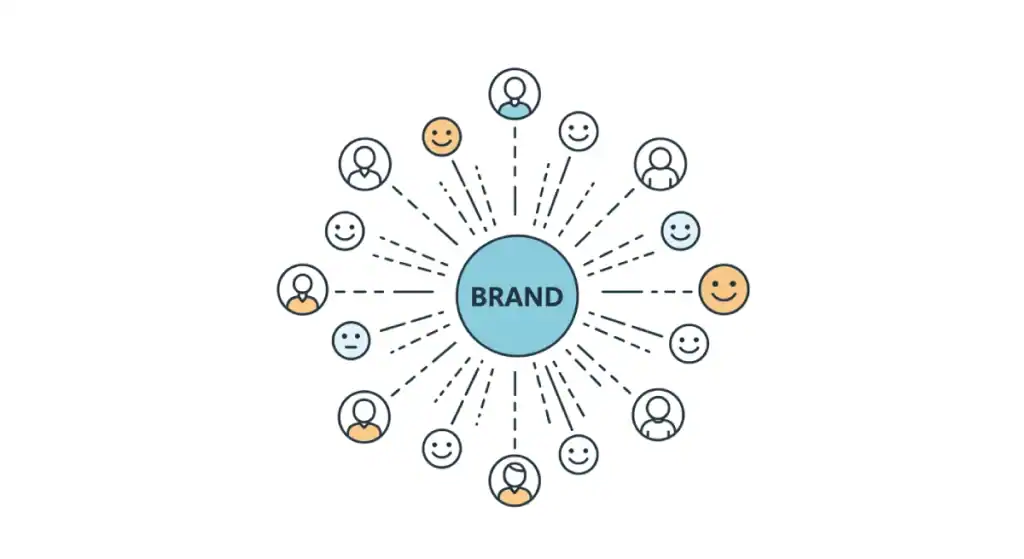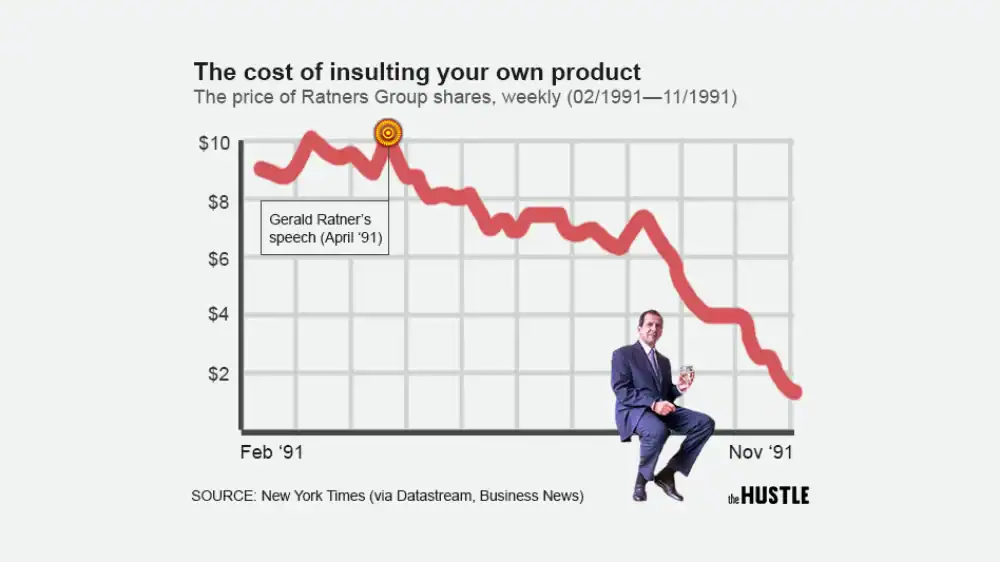Here's What Brand Equity Actually Is (and How to Build It)
Most small businesses are obsessed with the wrong things. They chase likes, followers, web traffic, and any other vanity metric that offers a quick hit of validation.
They spend fortunes on advertising to shout at people who aren't listening.
The most valuable asset they could build is left to wither. That asset is brand equity. And no, it has nothing to do with your bloody logo.
Understanding this difference is the most critical pivot you can make. It's the difference between building a business that lasts and making noise until the money runs out.
- Brand equity is the commercial value derived from consumer perception, not just a logo or branding materials.
- It encompasses customer experiences, trust, and emotional connections, building a valuable asset over time.
- Four pillars of brand equity include perception, perceived quality, loyalty, and recognition at the point of purchase.
- Inconsistency and a lack of a clear brand promise undermine brand equity and customer loyalty.
- Building brand equity requires discipline, focus, and commitment to delivering exceptional quality and genuine customer experiences.
Let's Be Clear: Brand Equity Isn't What You Think It Is

Before we go any further, we need to clear out the rubbish. The term has been butchered by marketing gurus and LinkedIn “thought leaders” to the point of being meaningless.
So, let's define it by what it is not.
It's Not Your Logo or Your “Brand Identity” Package
This is the most significant, most expensive misunderstanding in business.
Your logo is a symbol. A container. It's an empty vessel waiting to be filled with meaning. By itself, it's just a pretty shape.
That comprehensive brand identity package you bought? The one with the hex codes, the fonts, the slick mockups? That's just the uniform. It's the suit your brand wears. It creates recognition, sure. But it doesn't create respect.
A great brand identity design is essential for consistency. It's the first step. But it is not the journey. Thinking the job is done once you have a logo is like thinking you've built a house because you've bought a street number.
It's Not “Brand Awareness”
“But people know who we are!”
So what? People are aware of cockroaches. That doesn't mean they want them in their kitchen.
Brand awareness is simply a measure of recall. Can someone pick your name out of a lineup? Great. That's the baseline. It's not the goal. You can be widely known for being cheap, unreliable, or awful.
Awareness without positive perception is a liability. It just means more people know to avoid you.
It's Not Your Follower Count
I have to say this bluntly. Your followers count on Instagram or TikTok, which is, for the most part, a worthless metric for brand equity.
It's a measure of fleeting attention, not deep-seated loyalty. You can buy followers. You can get a lucky viral video. None of that builds a thing.
An audience is not a community. An audience watches. A community cares.
Brand equity is built on the foundation of a community that trusts you, not an audience that might scroll past your content. I would take a business with 1,000 loyal customers defending the brand in a pub argument over one with 100,000 followers who wouldn't notice if it vanished tomorrow.
So, What Is Brand Equity? The Brutally Simple Definition

All right, enough of what it isn't.
In its simplest form, brand equity is the commercial value that derives from consumer perception of the brand name of a particular product or service rather than from the product or service itself.
You'll pay £3 for a coffee from your favourite local shop when you could make one at home for 20p.
That's why a plain white t-shirt with a specific swoosh costs five times more than an identical one without it.
The Core Concept: The Extra Value in a Name
Brand equity is the measurable financial value your name adds to your offering.
It's the sum of all customer experiences, feelings, and perceptions about you. It's a gut feeling. It's trust. It's the shortcut a customer's brain makes when choosing you over a sea of competitors.
It's why they choose you without even thinking about it. That mental real estate is the most valuable property you can own.
It's an Intangible Asset on Your Balance Sheet
This isn't some fluffy marketing concept. It's a financial one.
For accountants, brand equity is an intangible asset. When a company is acquired, the buyer often pays a massive premium over the value of its physical assets (buildings, stock, etc.). That premium? An enormous chunk of it is brand equity.
It's the stored-up value of your reputation. It's what makes your business resilient. It allows you to weather storms, command higher prices, and attract better talent.
The Four Pillars That Actually Matter
Forget the jargon. To build it, you need to understand the four components that create it.
- Pillar 1: Brand Perception & Association This is the big one. It's the collection of thoughts, feelings, and mental connections people have when they see or hear your name. Is it quality? Innovation? Excellent service? Or is it “cheap,” “slow,” or “unreliable”? You don't decide this. Your customers do, based on your actions.
- Pillar 2: Perceived Quality Notice the word perceived. It doesn't matter if your product is technically the best on the market if customers believe it's inferior. Perceived quality is a measure of their faith in your ability to deliver. It's built through consistency.
- Pillar 3: Brand Loyalty. This is the holy grail. Loyalty isn't just repeat purchases. That can be driven by convenience or low prices. True loyalty is an emotional connection. It's when customers choose you even when there are cheaper or easier options. They stick with you. They recommend you. They forgive the occasional mistake. According to a study by Bain & Company, increasing customer retention by just 5% can boost profits by 25% to 95% [source]. That's the power of loyalty.
- Pillar 4: Brand Recognition & Recall. This is where awareness finally gets a look-in, but with a crucial twist. It's not just that people have heard of you. It's that your brand comes to mind at the point of purchase. This is brand salience. When a customer thinks, “I need X,” does your name pop into their head first?
Why You're Failing at Building It (And How to Stop)

Most businesses don't have a brand equity problem. They have a consistency problem. They have a promise problem. They have a focus problem.
The good news? These are all fixable.
You're Inconsistent
This is the number one killer of brand equity.
Your messaging is all over the place. Your customer service is great on Tuesday but abysmal on Friday. Your product quality varies from batch to batch—your visual identity changes with the wind.
Every inconsistency chips away at trust. Customers don't know what to expect. And when they don't know what to expect, they don't return.
I once advised a fantastic little restaurant. The food was brilliant. But the owner was flighty. One month, it was a “rustic Italian trattoria.” Six months later, it was a “modern Scandi dining experience.”
The menu changed, the decor changed, and the music changed. The only thing that stayed the same was the location. It confused everyone. The regulars stopped coming because their favourite dish was gone.
New people didn't know what it was meant to be. It failed within two years. The owner blamed the economy. I blamed the complete lack of consistency.
You Don't Have a Brand Promise (Or You Break It)
Your brand promise is the implicit contract you make with every customer. It's what they can expect from you every single time.
It is not a marketing slogan.
FedEx's old promise wasn't just a slogan: “When it absolutely, positively has to be there overnight.” It was a promise they built their entire logistics, pricing, and operations around. Breaking that promise was a cardinal sin.
What's your promise? Is it the fastest service? The highest quality product? The most caring support? Whatever it is, you must define it and then structure your entire business to deliver on it without fail. If you don't have one, you're just another commodity.
You're Chasing Trends, Not Building Trust
I see this all the time. A new social media platform gets hot, and businesses pour resources into it without a strategy. They jump on meme formats that don't fit their brand. They try to be “authentic” by posting cringeworthy behind-the-scenes videos.
This isn't building equity. It's brand LARPing.
Stop chasing the fleeting high of “going viral.” It's a distraction. Virality is lightning in a bottle. Trust is a stone fortress you build brick by brick daily. Focus on providing genuine value and being relentlessly reliable. That's what people remember.
You Ignore the Customer Experience
Brand equity is not built in the marketing department.
It is built into every single interaction a customer has with your business.
- How easy is your website to use?
- How clear is your pricing?
- How simple is your returns process?
- How does your support team speak to people?
- What does the packaging look like when it arrives?
A single poor experience can undo the goodwill from ten positive ones. A 2022 report highlighted that 61% of consumers would switch to a competitor after just one bad experience [source]. You must obsess over the entire customer journey, from first click to post-purchase support.
A Practical Framework for Building Brand Equity from Zero

This isn't rocket science. It's about discipline and focus. Here is the process if you're starting or trying to fix a broken brand. No fluff.
Step 1: Define Your Position. Who Are You and For Whom?
Stop trying to be everything to everyone. It's the fastest way to be nothing to anyone.
You need a sharp, straightforward answer to these questions:
- What specific problem do we solve?
- Who is our ideal customer? Be ridiculously specific.
- What makes us different from every other option they have?
Owning a small, well-defined niche is far more powerful than being a minor player in a massive market. Be the go-to brand for left-handed dentists in Scotland. Be the best coffee shop on a single street. Start small, dominate, then expand.
Step 2: Craft Your Core Message and Brand Story
This isn't about writing your website's fanciful “brand story” page. It's about codifying what you're all about.
Your core message should be simple, precise, and repeatable by everyone on your team. It's the foundation of all your marketing and communications.
Your story is the narrative that gives context to what you do. Why did you start this business? What do you believe in? This is where genuine connection happens. People don't buy what you do; they buy why you do it.
Step 3: Deliver on Quality. Relentlessly.
This should be obvious, but it isn't.
All the branding in the world cannot save a bad product or service.
Your offering has to be good. Not just okay. Good. It has to deliver on the promise you've made. Before spending a single pound on marketing, ensure your product is so good that it sells itself through word of mouth. That's the ultimate test.
Step 4: Create Positive Brand Associations
With your foundation in place, you can start building positive associations.
- Exceptional Customer Service: Turn problems into opportunities to create a loyal fan.
- Valuable Content: Share your expertise without asking for anything in return. Teach, don't just sell.
- Thoughtful Design: Ensure every touchpoint, from your website to your invoice, looks and feels professional and consistent.
- Community Engagement: Be a positive force in your industry or local community.
Step 5: Be Seen in the Right Places
Now, and only now, do you think about brand awareness? But not by shouting everywhere.
Where do your ideal customers hang out? What do they read? What podcasts do they listen to? Be there. Engage authentically. Sponsor a local event. Run targeted ads on a niche platform.
Strategic visibility is about being present in the proper context, reinforcing the perception you want to build.
How Do You Even Know If It's Working? Measuring Brand Equity Without a PhD

Measuring an “intangible asset” makes most business owners nervous. They imagine complex spreadsheets and expensive consultants.
It doesn't have to be that way. While big corporations use sophisticated models like the Brand Asset Valuator (BAV), you can get a powerful read on your brand health with simpler tools.
Forget Complex Models for a Minute. Start Here.
Don't get analysis paralysis. Focus on the indicators that directly impact your bottom line and customer behaviour.
The Simple Financial Metrics
Money talks. These metrics tell you if your brand has real financial muscle.
- Pricing Power: This is the ultimate test. Can you increase your prices by 5% without a mass exodus of customers? If the answer is yes, you have brand equity. If not, you're competing on price, a race to the bottom.
- Customer Lifetime Value (CLV): Have your customers stuck with you for years? Are they buying more from you over time? A rising CLV is a clear sign of growing loyalty and trust.
- Market Share: Are you steadily capturing a larger piece of your market? This shows that customers are actively choosing you over the competition.
The Customer Behaviour Metrics
What customers do is more important than what they say.
- Net Promoter Score (NPS): Ask a straightforward question: “On a scale of 0-10, how likely are you to recommend our brand to a friend or colleague?” It's a quick, effective way to measure loyalty and satisfaction. Your “Promoters” (9-10) are your equity builders.
- Brand Preference Surveys: Don't be afraid to ask directly. A simple survey with a question like, “If [Your Product] wasn't available, which alternative would you choose?” can reveal a lot about your competitive standing.
- Organic Search Volume for Your Brand Name: This is a fantastic signal. Are people typing “Inkbot Design” into Google, or are they typing “logo design agency? When they search for you by name, it means you've moved from being an option to being the destination.
Anecdotal Evidence: The “Pub Test”
Here's an unscientific but powerful measure.
Are people talking about you when you're not in the room? Do customers send you unsolicited emails praising your service? When you explain what your business does to a stranger in a pub, do they “get it” instantly?
This qualitative data, the stories and unprompted feedback are where the truth of your brand lives.
The Dark Side: Negative Brand Equity
Equity can go both ways.
When your brand name becomes a liability, that's negative brand equity. It's when your name actively repels customers and devalues your offering.
Think of Gerald Ratner. In 1991, the CEO of a successful UK jewellery chain publicly said his products were “total crap.” The brand's value plummeted by £500 million almost overnight [source]. The name became synonymous with “tacky and worthless.”

How It Happens
It rarely happens overnight, like in the Ratner's example. Usually, it's a death by a thousand cuts:
- A major ethical scandal or data breach.
- A decline in product quality that you ignore.
- Consistently terrible customer service creates an army of detractors.
- A tone-deaf marketing campaign that causes public outrage.
The Agony of Recovery
Once trust is shattered, rebuilding it is a monumental task. It's ten times harder, more expensive, and slower than building it right the first time.
Recovery requires radical transparency, a genuine apology, and a long, sustained, flawless execution to prove you've changed. Many brands don't survive it.
Your Brand Equity Is an Asset. Protect It Like One.
You wouldn't leave the doors to your warehouse unlocked. You wouldn't let just anyone access your bank account. So why are you so careless with your most valuable asset?
The Role of Brand Reputation Management
You need to be listening. Set up alerts for your brand name. Monitor social media and review sites.
When you see criticism, please don't ignore it or get defensive. Address it. Be human. Show that you're listening and that you care. One of the best ways to build equity is to handle a problem exceptionally well.
Legal Protections are Not Optional
Get your brand name and logo trademarked. It's not just for big corporations. A trademark is a legal deed to your brand. It prevents someone else from swooping in and capitalising on the reputation you've worked so hard to build. It's a foundational part of protecting your assets.
Train Your Team
Everyone who works for you is a brand ambassador, from the person packing boxes to the sales director.
Do they understand your brand promise? Do they live your values? Are they empowered to make customers happy? If your team isn't aligned, your brand experience will be fractured and inconsistent, no matter how good your marketing is.
A Final, Blunt Word
Here's the rub.
Brand equity isn't created in a workshop with sticky notes and lattes. It isn't found in a new font or a clever ad campaign.
It is the slow, unglamorous, cumulative result of a thousand small promises kept. It's the product of showing up, day after day and being excellent. It's the residue of trust.
It's the hardest thing to build and the easiest thing to lose. Stop wasting money on the fluff and start building something that matters.
Let's talk if you're ready to discuss building a brand with lasting value seriously. You can get a sense of our approach, and if you think we're a fit, request a quote here. Your business deserves more than just a pretty logo. It deserves an asset.
Frequently Asked Questions (FAQs)
What is the fastest way to build brand equity?
There is no “fast” way. The desire for speed is what leads to poor decisions. The most effective way is to focus on relentless consistency in product quality, customer experience, and brand messaging. Building trust takes time.
How is brand equity different from brand value?
They are often used interchangeably, but there's a nuance. Brand equity is the customer-centric view – the perception, loyalty, and associations in the minds of consumers. Brand value is the financial and monetary valuation of the brand as a separable asset. Substantial brand equity leads to high brand value.
Can a small business compete with large brands on equity?
Absolutely. Small businesses have an advantage: agility and personality. You can offer a level of personal service, community connection, and authentic storytelling that large corporations struggle to replicate. You don't compete on budget; you compete on trust and connection within your niche.
How much should I budget for “building brand equity”?
It's the wrong way to think about it. Brand equity isn't a line item in your marketing budget. It's the outcome of your entire business operating correctly. Your budget for product development, customer service training, and quality control is your budget for building brand equity.
Is a personal brand the same as a business's brand equity?
A strong personal brand (e.g., of a founder) can significantly contribute to a business's brand equity, especially in the early days. It can build initial trust and recognition. However, the long-term goal should be to transfer that equity to the business brand so the company's value isn't tied solely to one person.
How long does it take to see a return on building brand equity?
Within months, you'll see early indicators (better reviews and higher customer retention). Significant financial returns (like pricing power) will be seen over the years, not weeks. It's a long-term investment, not a short-term tactic.
Can negative brand equity be fixed?
Yes, but it's challenging and expensive. It requires a complete commitment to fixing the root cause of the problem, radical transparency, and a long period of proving that the brand has fundamentally changed. Many brands fail to recover fully.
Does brand equity matter for B2B companies?
Arguably, it matters even more. B2B purchase decisions often involve higher risk, larger sums of money, and longer-term relationships. A strong brand that signifies trust, reliability, and expertise is a massive competitive advantage and can significantly shorten sales cycles.
What's the first practical step I should take today?
Have an honest conversation with your last five customers. Ask them why they chose you, what they think of your service, and what word they would use to describe your business to a friend. Their answers are the raw, unvarnished truth of your current brand equity.
Do I need a complex brand strategy document?
No. You need clarity. Start by writing down, on a single page, your answers to these questions: Who are we for? What promise do we make to them? How are we different? Why should they trust us? If you and your team can't answer these clearly, start there.
If you're looking for direct, professional input on building your brand's value, that's what our brand identity services are designed for: when you're ready to create an asset, not just an image, request a quote.


